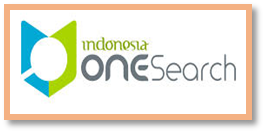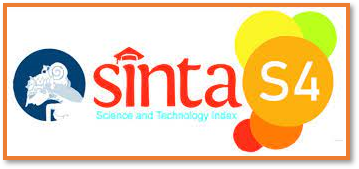The Effect of Interactive Media on Adolescent Behavior to Prevent Risky Sexual in Manado City
Abstract
Adaptation to adolescent growth and development needs to be optimized, this is because it will harm adolescent health when that age is confused. Various health problems in adolescents include risky sexual (kissing, masturbation, sex). Various previous studies have stated that the misuse of media or technology (smartphones, internet) to access various information including pornographic sites can increase adolescents' engagement in sexual activity because when adolescents continue to be exposed to it, adolescents will feel challenged to do so in real life. Therefore, it is necessary to increase the behavior (Knowledge, Attitude, and Skills) of adolescents through the implementation of interactive media interventions to prevent risky sexual behavior in adolescents. The purpose of this study is to analyze the effect of interactive media on the ability of adolescents through increasing knowledge, attitudes, and skills in preventing risky sexual behavior. The target of the research is teenagers who are in school and are included in the inclusion criteria, including 10-19 years old and unmarried with a large sample of 109 people. The method used in this study is a quasi-experimental without a control group which compares before (pre-test) and after (post-test) the intervention. Each intervention session has different media including lectures, videos, card games, and role plays. Each session will be conducted 1-2x every week with a total of 8 intervention sessions. The results of this study indicate that there is a significant effect between the implementation of interactive media and the knowledge, attitudes, and skills of adolescents to prevent risky sexual intercourse with p-values of 0.002,; 0.001; 0.014. This study concludes that it is hoped that it can improve the ability of adolescents and can be used as a pilot project that continues to be developed into nursing interventions in community settings so that adolescents can avoid deviant behavior, especially risky sexual behavior.
Full Text:
PDFReferences
Smith L, Jacob L, López-Sánchez GF, Grabovac I, Yang L, Pizzol D, et al. A Multicountry Study of the Violence-Related Risk Factors for Early Sexual Debut and Risky Sexual Behavior in Adolescents. J Interpers Violence. 2022;37(3–4):NP1275–97.
Pastor Z, Weiss P, Sigmundová D. Trends in sexual behaviour in Czech schoolchildren between 2002-2014. Cent Eur J Public Health. 2017;25(Suppl 1):S64–8.
Simak VF, Kristamuliana, Sekeon CG. Perilaku Seksual Berisiko serta Kaitannya dengan Keyakinan Diri Remaja untuk Mencegah : Studi Deskriptif. J Kesehat Reproduksi. 2022;9(1):19–24.
Casman C, Fitriani N, Bahtiar B, Pradana AA, Helfiyanti Y. Portrait of Interaction Between the Internet, Pornography and Child Sexual Abuse in Indonesia. J Kesehat Pasak Bumi Kalimantan [Internet]. 2021;4(2):52–62. Available from: http://e-journals.unmul.ac.id/index.php/JKPBK/article/view/6875/3923
Yunengsih W, Setiawan A. Contribution of pornographic exposure and addiction to risky sexual behavior in adolescents. J Public health Res. 2021;10:6–11.
Norcott C, Keenan K, Wroblewski K, Hipwell A, Stepp S. The Impact of Adolescent Sexual Harassment Experiences in Predicting Sexual Risk-Taking in Young Women. J Interpers Violence. 2021;36(15–16):NP8961–73.
Hittner JB, Owens EC, Swickert RJ. Influence of Social Settings on Risky Sexual Behavior. 2016;
Geremew AB, Gelagay AA, Yeshita HY, Azale Bisetegn T, Habitu YA, Abebe SM, et al. Youth Risky Sexual Behavior: Prevalence and Socio-Demographic Factors in North-West Ethiopia: A Community-Based Cross-Sectional Study. Int Q Community Health Educ. 2020;
Moyer-Gusé E, Nabi RL. Comparing the effects of entertainment and educational television programming on risky sexual behavior. Health Commun. 2011;26(5):416–26.
Doubova S V., Infante-Castañeda C, Pérez-Cuevas R. Internet-based educational intervention to prevent risky sexual behaviors in Mexican adolescents: Study protocol. BMC Public Health [Internet]. 2016;16(1):1–8. Available from: http://dx.doi.org/10.1186/s12889-016-2990-4
Miller AN, Kinnally W, Maleche H, Booker NA. The relationship between Nairobi adolescents’ media use and their sexual beliefs and attitudes. African J AIDS Res. 2017;16(2):129–36.
Aliyu TK, Aransiola JO. Factors Associated With Parent-Adolescent Communication on Sexual and Reproductive Health Issues in Urban Slums of Ibadan, Southwest Nigeria. Int Q Community Health Educ. 2021;
Gabbidon K, Shaw-Ridley M. Characterizing Sexual Health Conversations Among Afro-Caribbean Families: Adolescent and Parent Perspectives. J Adolesc Res. 2019;
García-Vázquez J, Quintó L, Agulló-Tomás E. Impact of a sex education programme in terms of knowledge, attitudes and sexual behaviour among adolescents in Asturias (Spain). Glob Health Promot. 2020;27(3):122–30.
Chou LN, Shen IC, Chu TP, Chen ML. Effectiveness of a school-based social marketing intervention to promote adolescent sexual health. Health Educ J. 2020;79(1):34–45.
DOI: http://dx.doi.org/10.30872/j.kes.pasmi.kal.v5i2.8767
Refbacks
- There are currently no refbacks.
Indexing by :










